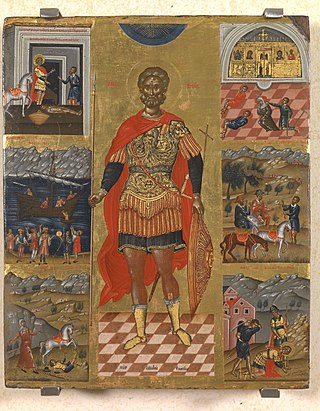
Cretan school describes an important school of icon painting, under the umbrella of post-Byzantine art, which flourished while Crete was under Venetian rule during the late Middle Ages, reaching its climax after the fall of Constantinople, becoming the central force in Greek painting during the 15th, 16th and 17th centuries. The Cretan artists developed a particular style of painting under the influence of both Eastern and Western artistic traditions and movements; the most famous product of the school, El Greco, was the most successful of the many artists who tried to build a career in Western Europe, and also the one who left the Byzantine style farthest behind him in his later career.

Theodore Poulakis was a Greek Renaissance painter and teacher. He is considered the father of the Heptanese School and one of the most prolific painters of Venetian Crete. Poulakis was a member of the Cretan School, his contemporary was Emmanuel Tzanes. Emmanuel Tzanes and Poulakis were active painters of the Cretan School until Candia, went to war with the Ottomans around 1649. Candia finally fell after twenty years of siege in 1669. Poulakis settled on the island of Corfu. Stephanos Tzangarolas was another famous painter in Corfu around the same period. Poulakis's works are likened to Andreas Pavias and Georgios Klontzas. Poulakis works exhibit qualities of the Venetian school. Over 130 of his paintings have survived and can be found all over the world.

Nikolaos Tzafouris, also Niccolo, Niccolò, Niccolö, Zafuri, Zafuris, was a Greek Renaissance painter. He was one of the founders of the Cretan School. He was influenced by Angelos Akotantos. His works influenced Emmanuel Tzanes, Elias Moskos, Georgios Klontzas and Theodoros Poulakis. Tzafouris was one of the most respected artists in Crete. His most notable work is Madre della Consolazione. The painting exhibits a combination of Byzantine and Italian styles. Another notable painter in Crete around the same time was Andreas Pavias. According to the Institute of Neohellenic Research, thirteen paintings are attributed to Tzafouris.

Ιoannis Apakas, also known as Johann Apakass was a Greek painter and priest. He was active in the latter part of the 16th century to the early 17th century. He was popular artist during his time.
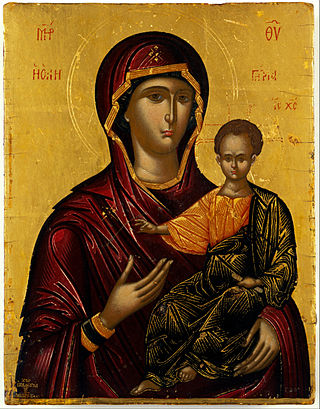
Emmanuel Lampardos, also known as Emmanouil Lampardos and Manolitzis. He was a Cretan Renaissance painter. Emmanuel and his nephew Emmanuel Lampardos have been very difficult to distinguish because they were active painters around the same period. Countless Greek and Italian artists emulated the famous painters. The name Lampardos was very notable in reference to Cretan art. The family was affiliated with famous painters Franghias Kavertzas and Tzortzi Papadopoulo. Lampardos emulated Georgios Klontzas, Michael Damaskinos, Angelos Akotantos, Andreas Pavias, Andreas Ritzos and Nikolaos Tzafouris. His style was the typical maniera greca with a strong Venetian influence. Countless images of the virgin and child have survived. Lampardos influenced Franghias Kavertzas, Emmanuel Tzanes, Philotheos Skoufos Elias Moskos, Leos Moskos, Ioannis Moskos and Emmanuel Tzanfournaris. Over fifty-six icons have been attributed to Lampardos.

Stephanos Tzangarolas also known as Stephano Tzangarola. He was a Greek painter during the late Cretan Renaissance. He migrated from Crete to the island of Corfu. He is a member of the Heptanese School and the Cretan Renaissance. His contemporaries at the time were Panagiotis Doxaras, Theodore Poulakis and Elias Moskos. His artwork began to reflect the transition of the classical maniera greca of Crete to the more refined style of the Ionian Islands. His style resembles the transition of Gentile da Fabriano and Fra Angelico from the maniera greca to their respective styles. Tzangarolas paintings influenced countless artists both Italian and Greek. Some artists that reflect his style include Spyridon Sperantzas and Georgios Kastrofylakas. His paintings can be found all over Greece mainly Athens and the Ionian Islands. Some of his work is in Cairo and London. His student was famous Greek painter Andreas Karantinos.

Spyridon Sperantzas was a Greek painter. He flourished during the Greek Neoclassical era and the Modern Greek Enlightenment in art also known as Neo-Hellenikos Diafotismos. Because of the Fall of the Republic of Venice, Sperantzas brought the Heptanese School into the Greek Romantic period. By the 1800s the Ionian Islands were occupied by both French and English forces and for the first time since the fall of the Byzantine Empire, the local Greeks governed themselves. Sperantzas, Nikolaos Kantounis, and Nikolaos Koutouzis represent the transition in painting that defined Modern Greek art. Sperantzas was influenced by Nikolaos Kallergis, Nikolaos Doxaras, and Nikolaos Koutouzis. His son Michael Sperantzas was also a famous painter and his apprentice. Spyridon also painted frescos.

Emmanuel Skordilis, also known as Emmanouil Skordilis. He was a Greek Renaissance painter. He was active in Crete around the time Emmanuel Tzanes, Elias Moskos, and Philotheos Skoufos were painting in Crete. He belongs to the elite group of Greek painters that followed the Venetian influenced maniera greca in Crete. Sixty eight of his works survived. He is one of few artists to not travel to the Ionian Islands and participate in the Heptanese School. He eventually settled in the Cyclades on the inland of Milos. Christodoulos Kalergis is another prominent Greek artist associated with the Cyclades, he was from Mykonos. Skordilis was influenced by Georgios Klontzas, Michael Damaskinos and Angelos. Skordilis brought the artistic style of Crete to the Cyclades and influenced countless artists in that region.

Christodoulos Kalergis, also known as Christodoulos Kallergis. He is one of the few Greek painters that were not from Crete or the Ionian Islands. He was from the Cyclades. He was active on the island of Mykonos and the Peloponnese Region. He is a member of the Neo-Hellenikos Diafotismos in art and the Greek Rococo period. Emmanuel Skordilis brought the art of Crete to the Cyclades. He influenced Kalergis and other local artists. Kalergis's most notable piece is the Virgin and Child. His art resembles a mixture of late Byzantine art and the Venetian influenced maniera greca. Ten of his paintings and four frescos have survived. Around the period, another famous artist Nikolaos Kallergis shared the same last name.

Georgios Kastrofylakas (Greek: Γεώργιος Καστροφύλακας, 1699/1705 – 1760/1770), also known as Georgios Kastrofylax or (Zorzis). He is one of the few Greek painters that remained in Crete. Others included Ioannis Kornaros. Kornaros was his student. Kastrofylakas followed the lines of the Cretan School. His work was influenced by legendary artists such as Georgios Klontzas, Michael Damaskinos and Angelos. Historians argue Kastrofylakas had many students due to the resemblance of his work. He belongs to the Neo-Hellenikos Diafotismos in painting and the Greek Rococo period. He influenced countless Greek iconographers. Thirty-six paintings are attributed to Kastrofylakas. The artist added more realism to his paintings. Most of his artwork is in Heraklion, Crete. His most notable work is the Adoration of the Magi.

Nicholas Ritzos also known as Rizo and Ricio). He was a Greek Renaissance painter. His father was famous painter Andreas Ritzos. His brother was painter Thomas Ritzos. His son was painter Manea Ritzos. Nicholas and his father Andreas Ritzos are the forefathers of the Cretan School of painting. They influenced countless artists both Greek and Italian. There painting style was the typical Venetian influenced maniera greca in Crete. The island transitioned from the classical Byzantine painting to a more refined style. His contemporaries were Andreas Pavias, Nikolaos Tzafouris, and Angelos Akotantos. They influenced painters such as Michael Damaskinos, Petros Lambardos, and Emmanuel Lambardos. Nine of his works have survived.
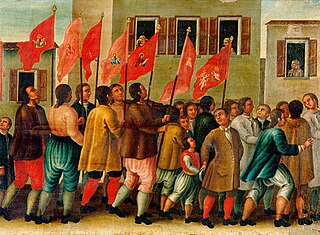
Ioannis Korais was a Greek painter. He was a prominent member of the Heptanese School. His contemporaries were Nikolaos Doxaras and Nikolaos Koutouzis. His family was from the island of Chios. He was the grandson of the painter Michael Korais from Chios. He helped revolutionize Greek painting. He was a follower of Panagiotis Doxaras and the new techniques he was employing.

Ieremias Palladas, also known as PouladasIeremia Pallada. He was a Greek Renaissance painter. He was a clergyman, painter, and educator. He was affiliated with Saint Catherine's Monastery in Mount Sinai, Egypt. He is one of the most notable Greek painters of the 17th century. His family consisted of clergy and painters. His nephew was Patriarch of Alexandria Gerasimos Palladas. His work was influenced by Nikolaos Tzafouris and Angelos Akotantos. Georgios Klontzas and Emmanuel Lambardos were active in Crete around the same period. Palladas influenced the works of Theocharis Silvestros, Iakovos Moskos, Ioannis Kornaros and Philotheos Skoufos. According to the Institute of Neohellenic Research, twenty-four of his works survived. His specialty was painting crosses for the iconostasis or templo. Most of his works are in Egypt.
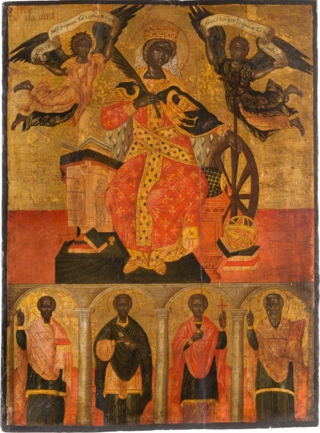
Theocharis Silvestros was a Greek Baroque painter. He was a monk affiliated with Saint Catherine's Monastery Mount Sinai, Egypt. He was also active in Heraklion Crete. He was influenced by famous painters Emmanuel Lambardos and Ieremias Palladas. Theocharis was a renowned painter of the Cretan School. He influenced countless Greek painters. He was active during the same period as Philotheos Skoufos and Franghias Kavertzas. His most notable works are of Catherine of Alexandria. Most of his remaining works are associated with Saint Catherine's Monastery Mount Sinai, Egypt. He was a Sinaitic monk.

Georgios Nomikos was a Greek painter. He converted to Christianity from Judaism. He was a Greek Baroque painter. He was a member of the Cretan school and the Heptanese (Ionian) school. His contemporaries were Georgios Kastrofylakas, Theodore Poulakis, and Georgios Markou. He shared the same last name with famous Greek painter Demetrios Nomikos. He was active on the island of Zakynthos, Kefalonia Arta and Ioannina. Six of his paintings survived. Some of his frescos have survived in the destroyed church of Saint George in Lingiades, Ioannina. His work represents an evolution from the art of Angelos Akotantos and Elias Moskos to a more refined technique influenced by the art of the Ionion Islands.

Ioanni Korai was a Greek painter that shared the same name as his famous uncle Ioannis Korais. He was a prominent painter on the Ionian Islands. His family migrated to Zakynthos from Chios. He was a member of the Heptanese School. His contemporaries were Dionysios Kallivokas and Nikolaos Koutouzis. He was taught painting by Ioannis Korais. He was active during the Modern Greek Enlightenment and Greek romanticism in art. He influenced countless Greek and Italian painters. Korai brought Greek artwork into the Modern Greek art period. Twelve of his paintings survived. His most notable painting is a portrait of Kyriakos Chorafas painted in 1826. The painting is at the National Gallery of Athens.

Konstantinos Kontarinis, also known as Konstantino Kontarini, was a Greek Baroque painter of the Heptanese School. He was heavily influenced by the works of Theodore Poulakis. His contemporaries at the time were Stephano Tzangarola and Panagiotis Doxaras. His work signals a transition for the Cretan School to the more refined Heptanese School. Kontarinis clearly follows the traditional maniera greca. The art was heavily influenced by the Venetian style. He influenced the works of countless Greek and Italian painters namely Spyridon Sperantzas and Nikolaos Kallergis. According to the Institute of Neohellenic Research, eighty-five of his works survived. His most notable work is the portable icon consisting of Scenes from Genesis. It is featured at the Byzantine Museum Athens, Greece.

Stylianos Devaris, also known as Defaris and Kornaros respectively. He was a Greek painter and goldsmith. He was one of the prominent painters from the island of Lefkada. He was a member of the Heptanese School. The island featured many painters namely: Konstantinos Kontarinis, Spyridon Ventouras, Spyridon Maratzos, and Makarios Lefkas. A notable theme popular on the island was John Chrysostom, Criticizing Empress Eudoxia. Stylianos painted his own version of the theme. Spyridon Ventouras and Makarios Lefkas also painted their versions. Devaris mainly painted ecclesiastical themes. According to the Institute of Neohellenic Research, over nineteen of his paintings have survived. His most notable work was John Chrysostom, Criticizing Empress Eudoxia.
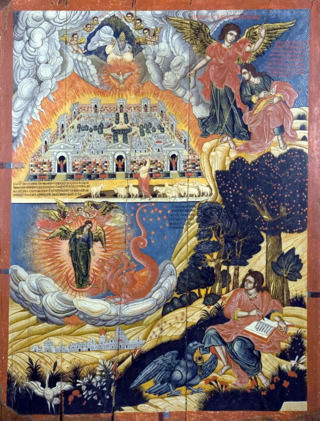
Michael Prevelis. He was a Greek painter. He was active on the island of Crete during the eighteenth century. He was one of few Greek painters still active on the island. Other painters included: Ioannis Kornaros and Georgios Kastrofylakas. His work diverged from the traditional Greek mannerism. He was a representative of the Neo-Hellenikos Diafotismos in art, he was another representative of the Greek Rococo and Baroque periods. The Greek mannerisms were reflected in iconography and other painted mediums at the time. Nine of his works have survived they are all located at the Preveli Monastery. His most notable work is the Book of Revelation.

Ioannis Skordilis was a Greek painter. He was active on the Cycladic islands. He shared the same last name as Antonios Skordilis and Emmanuel Skordilis. The family originally came from Crete. They were probably related. Skordilis was a prominent name associated with Cretan painting since the 1500s. Other notable painters of the Cycladic Islands were Christodoulos Kalergis, and Defterevon Sifnios. Twelve of his works survived. They are mainly on the Cycladic islands. His most notable work is at the Byzantine and Christian Museum. It is called the Holy Trinity and Saints. The piece is similar to a work completed by Emmanuel Tzanes; it was a common theme among Greek painters.

























